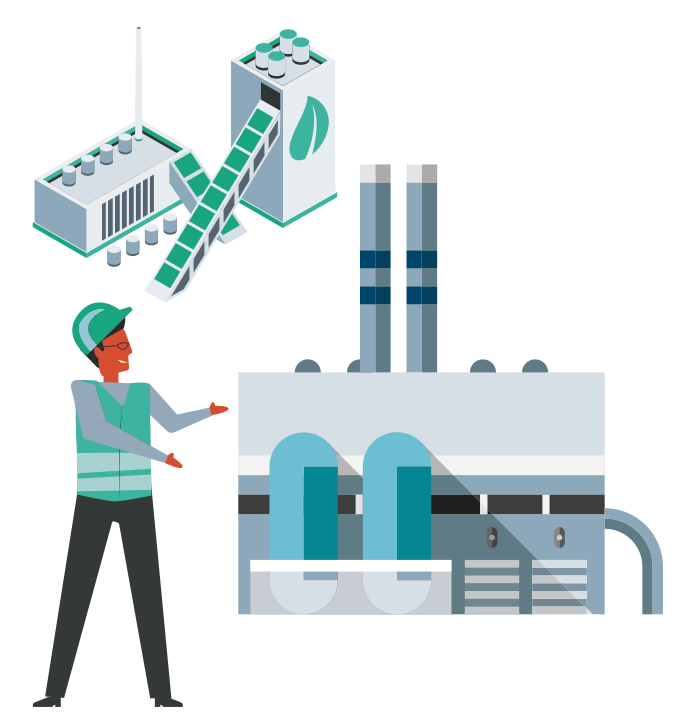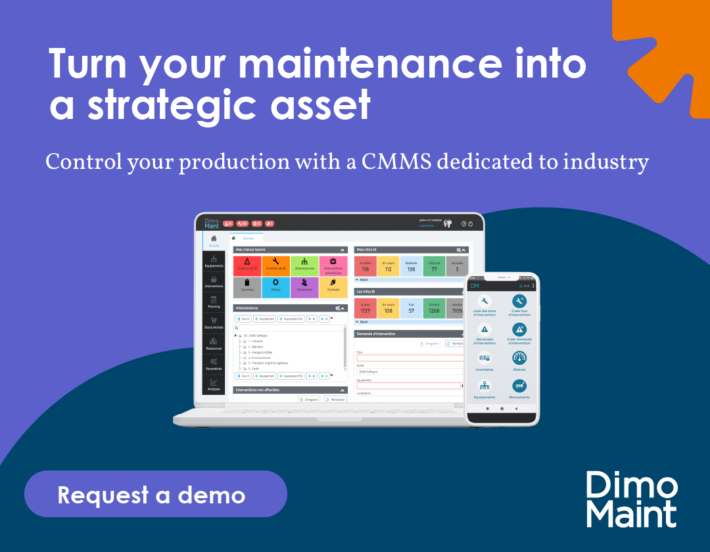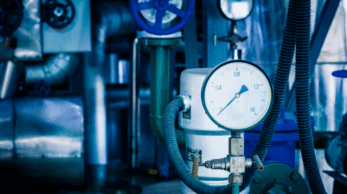The oil and gas industry operates under some of the most demanding conditions in the industrial sector.
Industrial maintenance plays a crucial role, not only in ensuring the continuity of operations but also in guaranteeing the safety of facilities and their compliance under all circumstances.
A complex variety of critical assets must be maintained, including pumps, compressors, valves, and piping systems. Every minute of downtime affects assets and thus the productivity of sites: equipping oneself with tools dedicated to maintenance is necessary to ensure reliable operations, no matter the conditions.
The challenges of the sector: Ensuring the reliability of high-stakes facilities
For the oil and gas sector, ensuring the continuous functioning of assets is both a challenge and
Managing unplanned downtime
Unscheduled shutdowns are one of the central issues in the oil and gas sector. Any failure can lead to the complete shutdown of a facility, and therefore result in a drop in productivity and substantial financial losses. For operators, the implementation of maintenance programs is a prerequisite for detecting early signs of failure and intervening as quickly as possible.
Safety of assets and individuals
The extreme operational conditions characteristic of the sector have a significant impact on assets. From high temperatures to the corrosive environments typical of oil and gas sites, several points call for constant monitoring. Industrial maintenance must adapt to these specific constraints, including the deployment of:
- Enhanced protection of assets against corrosion
- Use of materials and components certified for hazardous areas
- Strict procedures for interventions in risk environments
- Specialized training for maintenance technicians
The shortage of labor
The sector faces a significant labor shortage, even though experienced technicians are indispensable for the continuity of oil and gas sites. This situation complicates the transfer of knowledge and the maintenance of a high level of expertise in maintenance. For industrialists, the only solution is the adoption of a solid knowledge base that can be transmitted to new, less experienced maintenance workers.
Environmental impact
Finally, oil and gas facilities are particularly scrutinized for their environmental impact. Their maintenance must demonstrate extreme rigor in order to prevent leaks and emissions and optimize the energy efficiency of assets. Quality industrial maintenance will also extend the lifespan of facilities and ensure compliance with environmental standards, two sine qua non conditions for the continuity of activity.
The importance of preventive maintenance for the sector
Widely used by the sector, preventive maintenance is the answer to the challenges mentioned
Preventive maintenance’s main advantages include:
- Significant reduction of unplanned stops: Preventive maintenance should allow for early detection of anomalies and intervention before any breakdown for continuous productivity
- Optimization of maintenance costs: reducing industrial maintenance costs is achieved by planning the necessary human and material resources for interventions in advance.
- Improvement of the safety of the facilities: constant monitoring and regular maintenance will identify and correct risks on the sites before they compromise the quality of the assets.
- Extension of the lifespan of assets: prolonging the lifespan of the assets is made possible by regular and anticipated maintenance, which significantly limits wear and tear.
By acting at the source, preventive maintenance eliminates a significant number of uncertainties about the condition of assets. Once implemented – and well orchestrated through a Computerized Maintenance Management System (CMMS) – this industrial maintenance allows full use of assets, capitalizing on previous maintenance operations and strictly adhering to regulatory constraints.
Adopting solutions to meet sector challenges: the CMMS

The contributions of the CMMS to the oil and gas sector are notably:
- Centralize and structure technical data: With the CMMS, the operator has a knowledge base unifying all information on assets, their characteristics, and their maintenance history.
- Plan and monitor maintenance interventions: the computerized system enables the orchestration of maintenance interventions through dynamic scheduling and dashboards that provide visibility. Resource distribution is clearer, and labor, scarce in the sector, is allocated to its full potential.
- Manage spare part inventory: the maintenance software allows precise tracking of inventory levels, automatic reordering thresholds, and complete visibility on the availability of critical parts.
- Generate comprehensive analysis reports: as important as the maintenance operations themselves, information on asset performance, maintenance costs, and trends are all available in the CMMS software.
- Ensure traceability of interventions: the maintenance software documents in detail each maintenance action, its results, and the individuals involved, thus building a detailed and auditable history.
The Internet of Things (IoT) complements these capabilities by enabling real-time monitoring of critical assets, and therefore early detection of anomalies. IoT devices placed on assets will optimize maintenance intervals and provide complete data that can be used for predictive maintenance of assets.
Case Study – DYNEFF and ORYX Companies
The case of DYNEFF, a major player in the distribution of petroleum products, perfectly illustrates the contributions of a CMMS solution. Switching to DimoMaint allowed the distributor to effectively unify data from equipment spread across 50 sites and thus move away from management by Excel, which is not conducive to reliable preventive maintenance.
By deploying the CMMS at a pace suitable for the 60 users, DYNEFF achieved a smooth transition to a new tool and reaped numerous benefits, among which:
- Eradication of paper format and more reliable maintenance procedures
- Significantly enhanced visibility over all assets
- A significant increase in productivity, with the number of work requests processed having been multiplied by 10
“DimoMaint’s solution allowed us to centralize information and share it. All employees speak the same language and have the same information at the same time.” Read the full testimonial.
Meanwhile, ORYX, a supplier of petroleum products and services in Africa, trusted DimoMaint’s maintenance software to better manage information concerning its assets. The CMMS eliminated sources of information that were too heterogeneous and referred to a single source of truth, ideal for the traceability of operations.
Capable of unifying information among a multitude of distant and international sites, DimoMaint was quickly adopted by the teams and now provides ORYX with perfect visibility on its preventive maintenance.
“This solution has contributed to the optimization of our maintenance tasks, but has also allowed the company to make savings. The finance department and the general management can rely on more accurate and better-controlled information.” Read the full testimonial.



